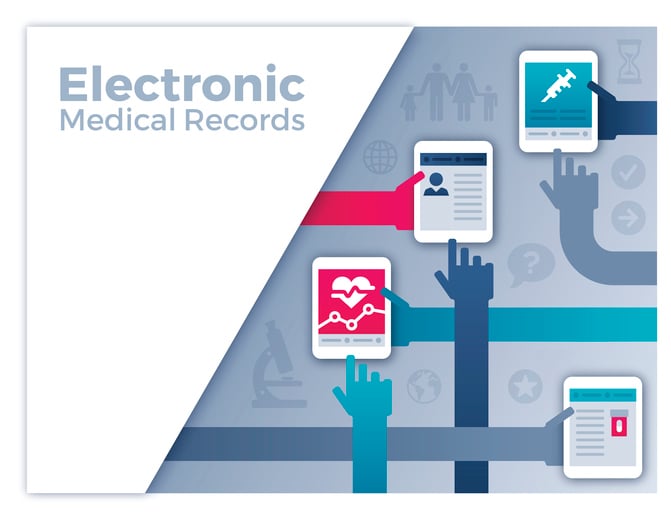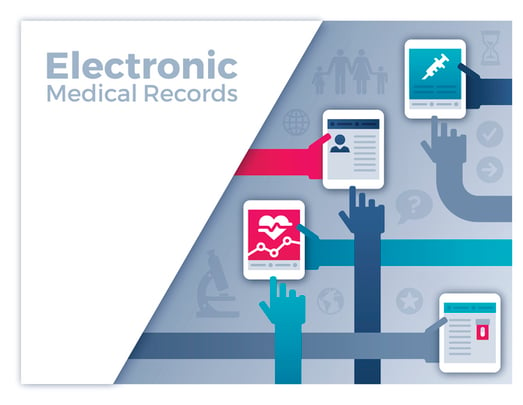Running a medical practice involves managing dozens of ongoing costs, and understanding them is...


The Electronic Medical Record (EMR) system is designed to provide comprehensive, up-to-date information regarding the patient journey that can be shared among different departments or medical centers, facilitating effective communication between clinicians and improving the quality of patient care.
With the help of EMRs, healthcare organizations can optimize their workflows, reducing waste and accelerating patient flow while improving patient outcomes. Workflows are essential for ensuring efficient, effective, and compliant operations within a healthcare organization. By establishing and following standard healthcare workflows, clinicians, and staff can ensure patient care is prioritized and delivered in a timely manner while also reducing the risk of errors.
An integrated and optimized EMR system also improves communication between healthcare providers by standardizing information-sharing processes and tracking referral sources. This allows your team to coordinate care more effectively and enhances documentation accuracy.
Workflow analysis is an important part of any healthcare organization, as it evaluates existing processes within the health systems, identifies areas for improvement, and helps to set new standards for patient safety, communication, and care.
Workflow analysis looks at how the different tasks within a process are connected and how these tasks interact with one another. It can also identify potential bottlenecks in the patient care flow, provide insight into resource use, and uncover gaps between your clinical staff and other healthcare personnel. The information gained from workflow analysis leads to improved coordination of patient care.
Regular evaluation of a medical practice’s workflows helps to streamline and improve the day-to-day operations. In order to have a strong grasp of how things progress and where to improve, it is wise to review workflows using the following steps:

It is important to look at the current process used to complete workflows, and be honest with what’s working - and what’s not. When working with a practice management agency, shadowing can also be effective, as an objective perspective can oversee the process, document, and ask pertinent questions to identify areas for improvement.
Be sure to include end-users in the conversation rather than focusing on generalized goals to fine-tune the workflow.
With an accurate analysis and the right users involved in the mapping process, identifying bottlenecks is an easy step. Once bottlenecks are identified and prioritized by their most significant impact on workflow success, it is time to begin adjusting to improve efficiency. Users can provide insight into the best steps that both eliminate bottlenecks and improve patient experience.
Pro Tip: Work in stages rather than attempt to fix all problems at once. Also, create milestones to show that you are achieving goals along the way.
Try the Plan-Do-Study-Act (PDSA) method to find the right workflows for the practice. With this process, you think carefully about each step and the best way to move forward, while also having repeatable steps to return to and adjust as necessary.
Working from a basic template and adjusting for your medical practice may seem straightforward, but it is the ideal time to loop in any users who may have tweaks or tricks they use regularly that will be affected by the workflow setup.
Have honest conversations with these users and encourage feedback and voicing of concerns. This may help reduce the iterations needed to optimize the workflow.
Once you have the feedback from your users, it's time to make final tweaks and document your findings and recommendations. If you are using the PDSA method, this is especially easy since you already documented your findings and any adjustments made.
However, if the results aren’t currently documented, be sure to write down what you learned from the process and keep a record of what helped to make workflows optimized and what didn't. This will help you in future rounds of setup or workflow optimization.
 Optimizing workflow management means less work and stress for your medical practice staff. Understanding where the sticking points are and addressing those points in the workflow can make the difference you need to see, which in turn makes work easier for others as well.
Optimizing workflow management means less work and stress for your medical practice staff. Understanding where the sticking points are and addressing those points in the workflow can make the difference you need to see, which in turn makes work easier for others as well.
Don’t forget to communicate any changes made to affected parties and document all changes to clinical workflows for onboarding new users into the workflow system. This critical step for training new team members is handled on-site by practice management agencies, improving the auditing process for new team members and allowing error correction.
This also provides documentation to assist in adhering to processes and procedures your team has determined to be the most efficient for your medical practice.
Regular communication with stakeholders can ensure that everyone is on the same page when it comes to creating successful workflows that can save time for your team.
Implementing workflows and streamlining processes can be challenging. Our 99MGMT Operations Team is available to discuss these changes and the best way to implement them within your medical practice.


Running a medical practice involves managing dozens of ongoing costs, and understanding them is...

A Texas physician opened a new practice with everything in place – staff hired, patients scheduled,...

Your biller is three weeks behind on claims. Two no-shows went unfilled this morning. Your office...

Every minute spent chasing paperwork or fixing scheduling issues is time taken away from patients....

Most physicians didn’t go through years of training to become billing experts, HR managers, or IT...

If your medical practice overhead seems to be eating into your revenue, you’re not alone. Research...

Marketing and referral strategies are part of running a private practice. In Texas, they come with...
.jpeg?height=200&name=alone-bills-calculator-1253591%20(1).jpeg)
Opening a medical clinic is rewarding – but it comes with upfront costs. Lease deposits. Equipment....

Ending a relationship with a patient isn’t something providers take lightly. But when certain...

The Stark Law, officially called the Physician Self-Referral Law, is a federal rule that shapes how...
Leave a Comment